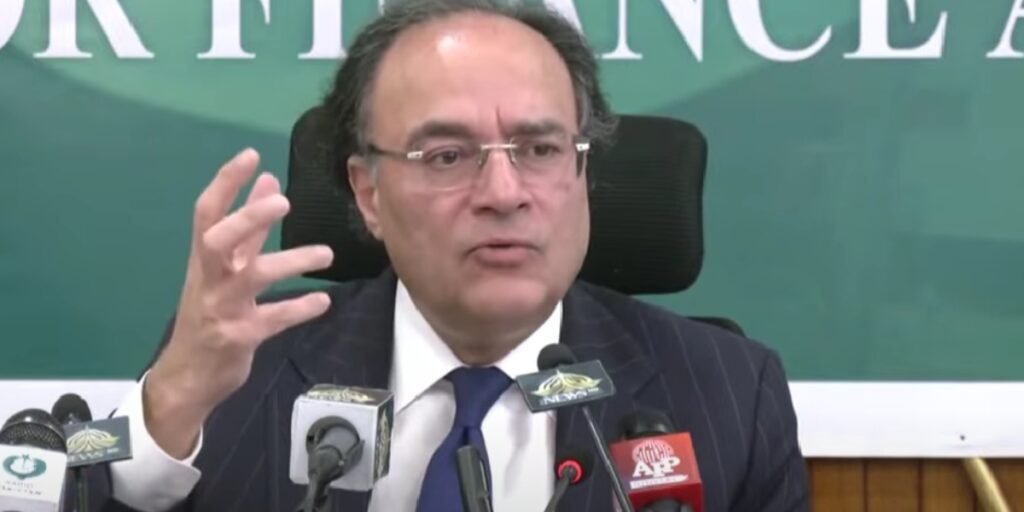ISLAMABAD: The Finance Minister Muhammad Aurangzeb’s post budget presser on Wednesday took a dramatic turn when journalists walked out in protest. The press conference, Muhammad Aurangzeb, was to highlight the key points of the newly announced federal budget. However, tensions rose when journalists were denied a technical briefing a tradition followed for the past 20 years.
The Finance Minister arrived at the post budget presser along with the Secretary Finance and the Chairman Federal Board of Revenue (FBR). Journalists immediately voiced their concerns over the missing briefing, arguing it was crucial to fully understand the complex budget details. In response, the journalists boycotted the post budget presser and left the venue, staging a protest outside.
During the post budget presser, before the walkout, Finance Minister Muhammad Aurangzeb addressed several important economic measures. He said, “We are trying to provide as much relief as possible. Our effort was to give maximum relief to the salaried class.” He added that last year, the government was forced to impose taxes as international financial institutions were not cooperating.
The Finance Minister also highlighted the introduction of tariff reforms in the federal budget. “People ask if this will lower tax revenue, but these reforms will increase the country’s exports,” he explained at the post budget presser. According to him, customs duties on 4,000 tariff lines have been reduced to zero, making Pakistani goods more competitive in global markets.
He further shared that the government discussed the issue of not imposing additional taxes on the agricultural sector with the concerned board. As a result, taxes on pesticides and other farming items were withdrawn on the Prime Minister’s directions. The minister also announced that loans would be provided to small farmers.
Muhammad Aurangzeb said pensions and salaries should be linked with inflation, and the federal government would work alongside provincial governments to promote agriculture and livestock. “There should be a clear policy for the agriculture and livestock sectors,” he added during the post budget presser.
Budget 2025-26 key takeaways
Here are the key highlights from the federal budget for FY26:
Total spending fixed at Rs17.573 trillion, 7 per cent lower than last year
Growth goal set at 4.2 per cent; fiscal deficit capped at 3.9 per cent of GDP
FBR tax-to-GDP ratio raised to 10.4 per cent, with a 1.6 per cent yearly rise
New tax slabs for salaried class; 2.5 per cent for incomes between Rs0.6m–Rs1.2m
IT exports reached $3.1 billion; aim set at $25 billion in 5 years
Rs1,186 billion reserved for subsidies, including electricity
Scholarship scheme to cover 12 million children
Rs8,210 billion set aside for debt servicing: nearly half the budget
Defence allocation raised by 20.2 per cent to Rs2,550 billion (1.97 per cent of GDP)
The tax target increased to Rs14.131 trillion, up by 18.7 per cent
Super tax cut to 5 per cent for firms earning Rs200m–Rs500m
18 per cent tax proposed on imported solar panels, digital services, and fuel-based vehicles
Federal development funds cut by 20 per cent to Rs1.354 trillion; provinces get 36.9 per cent more at Rs2.869 trillion
Non-tax revenue estimated at Rs5.15 trillion
Pensions were raised by 7 per cent; salaries increased by 10 per cent for Grade 1-22 employees





